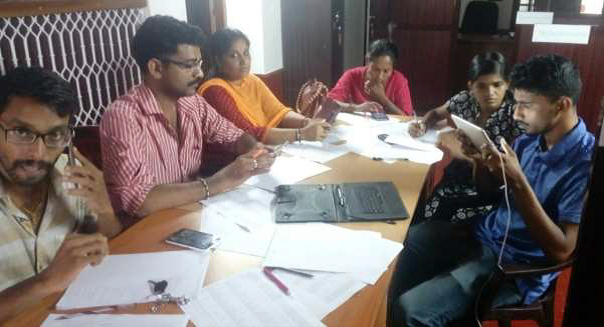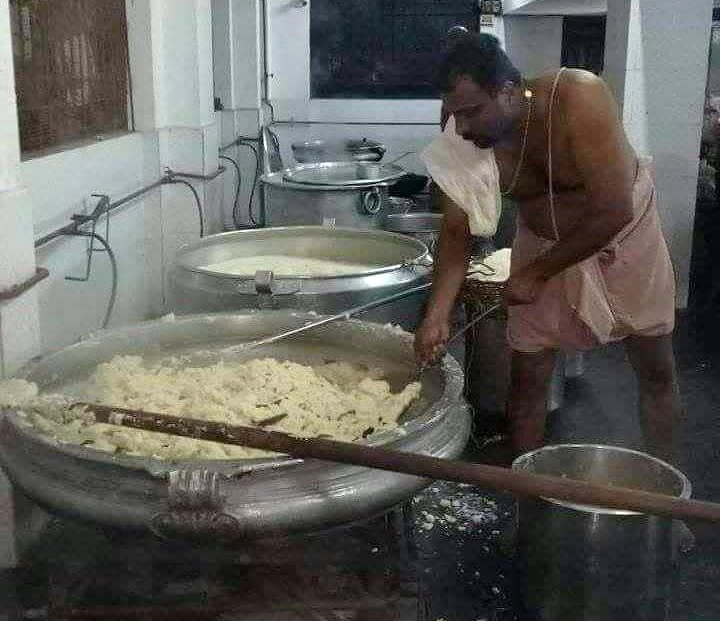Kerala Flood Relief Report |
In the aftermath of the severe southwest monsoon that devastated the South Indian state of Kerala, over 370 lost their lives, and a million people were displaced. Torrential rains and floods resulted in 221 collapsed bridges, 537 landslides, and damaged over 6,000 miles of road. About 42,000 hectares of crop were completely destroyed, affecting over 260,000 farmers. The biggest calamity over the past century has resulted in estimated losses of over $3 billion. But together we can rebuild Kerala, and we will. Volunteers from Sewa International and its partner organization Sevabharathi Keralam continued to work round the clock, running a 24×7 hotline in the US and multiple helpline centers across Kerala. Over 85,000 volunteers — 60,000 men and 25,000 women, and thousands of children and youth are involved in rescue operations, offering medical help, helping at community kitchens, cooking and serving meals. Sevabharathi has spent over $172,000(~Rs.1.2 crores) so far in undertaking various rescue/relief activities. Of the 3,965 rescue camps run by the government, 150 of them are directly managed and maintained by Sewa’s partner nonprofit organization with 50 volunteers exclusively dedicated to each camp. About 20 volunteers are deployed to each of the remaining rescue camps. Volunteers take up various responsibilities that include rescue, logistics and support, distribution of relief material, cooking, serving, transportation, etc. Volunteers from all districts, especially the fishermen community from Kozhikode, Thrissur, and other coastal areas are actively engaged in the rescue work in Ernakulam, Pathanamthitta, and Thrissur districts. More than 70,000 people were rescued by Sevabharathi volunteers from the flood affected areas. |
Volunteer Sewa International invites volunteers to come forward and support various initiatives by volunteering with us. |
Help Desk
The team helped rescue activities in the entire state including supporting government officials in identifying isolated people in the flood affected areas across various locations. Sevabharathi volunteers were also deployed at help desks in each district. Sewa volunteers in the US coordinated the requests that came over the 24×7 hotline and dedicated Whatsapp group. |
Rescue Vehicles
|
Warehouses
Special district-wise teams are constituted to coordinate the activities. The collected materials are transported to the relief camps, and the rest of the materials are distributed to households in the flood affected areas. |
Community Kitchens
|
Medical Camps
In this hour of need, Sewa urges everyone to donate generously. |


 Sewa volunteers monitored a 24×7 US hotline number, while a complementary round the clock help desk was set-up in Thrissur district with constant communication with the US counterpart. Efficient use of technology and social media tools helped sharing real time data between the Indian and American teams. Requests were triaged to Indian Military hotline in Kerala and also to volunteers on the ground in the specified location by mapping the GPS coordinates of victims and rescue teams.
Sewa volunteers monitored a 24×7 US hotline number, while a complementary round the clock help desk was set-up in Thrissur district with constant communication with the US counterpart. Efficient use of technology and social media tools helped sharing real time data between the Indian and American teams. Requests were triaged to Indian Military hotline in Kerala and also to volunteers on the ground in the specified location by mapping the GPS coordinates of victims and rescue teams. A major challenge faced by all government agencies is surface water transportation to rescue people from isolated places. Sevabharathi mobilized 150 boats from the coastal areas for the rescue action. Together, with volunteers from the fisherman community who are well informed of the local terrain and geography, thousands of people were rescued. About 70 ambulances of Sevabharathi were engaged in the rescue activity ferrying doctors, rescue teams, medicines, and medical equipment. More than 300 other vehicles deployed provide service transportation of food grains and other materials in the state.
A major challenge faced by all government agencies is surface water transportation to rescue people from isolated places. Sevabharathi mobilized 150 boats from the coastal areas for the rescue action. Together, with volunteers from the fisherman community who are well informed of the local terrain and geography, thousands of people were rescued. About 70 ambulances of Sevabharathi were engaged in the rescue activity ferrying doctors, rescue teams, medicines, and medical equipment. More than 300 other vehicles deployed provide service transportation of food grains and other materials in the state. Three major warehouses catering to the state’s needs are being run by Sevabharathi at Trivandrum, Palakkad, and Kasargod districts. An additional 210 warehouses and sub-centers are operational across all districts to mobilize grocery, clothes, sanitation materials, and medicines.
Three major warehouses catering to the state’s needs are being run by Sevabharathi at Trivandrum, Palakkad, and Kasargod districts. An additional 210 warehouses and sub-centers are operational across all districts to mobilize grocery, clothes, sanitation materials, and medicines. Supplies in the form of dry and ready to eat food wre distributed by Sevabharathi and other sister nonprofits such as Swami Vivekananda Medical Mission. To cater to staple food, community kitchens were opened across Kerala to serve food to victims and also to the 85,000 volunteers working in rescue activities. One such kitchen is run by over 500 volunteers at the Shiva Temple, Ernakulam, where 22,000 pounds of food is cooked three times a day.
Supplies in the form of dry and ready to eat food wre distributed by Sevabharathi and other sister nonprofits such as Swami Vivekananda Medical Mission. To cater to staple food, community kitchens were opened across Kerala to serve food to victims and also to the 85,000 volunteers working in rescue activities. One such kitchen is run by over 500 volunteers at the Shiva Temple, Ernakulam, where 22,000 pounds of food is cooked three times a day. Sewa Bharati is conducting medical camps across different districts in Kerala. Altogether, 25 medical camps have been conducted at Kuttanad region, one of the most affected areas in the state. Medical teams, with experienced doctors from different hospitals and Sewa Bhrathi units, are providing services in these areas. The medical camps are organized in the affected areas, as well as at relief camps.
Sewa Bharati is conducting medical camps across different districts in Kerala. Altogether, 25 medical camps have been conducted at Kuttanad region, one of the most affected areas in the state. Medical teams, with experienced doctors from different hospitals and Sewa Bhrathi units, are providing services in these areas. The medical camps are organized in the affected areas, as well as at relief camps.